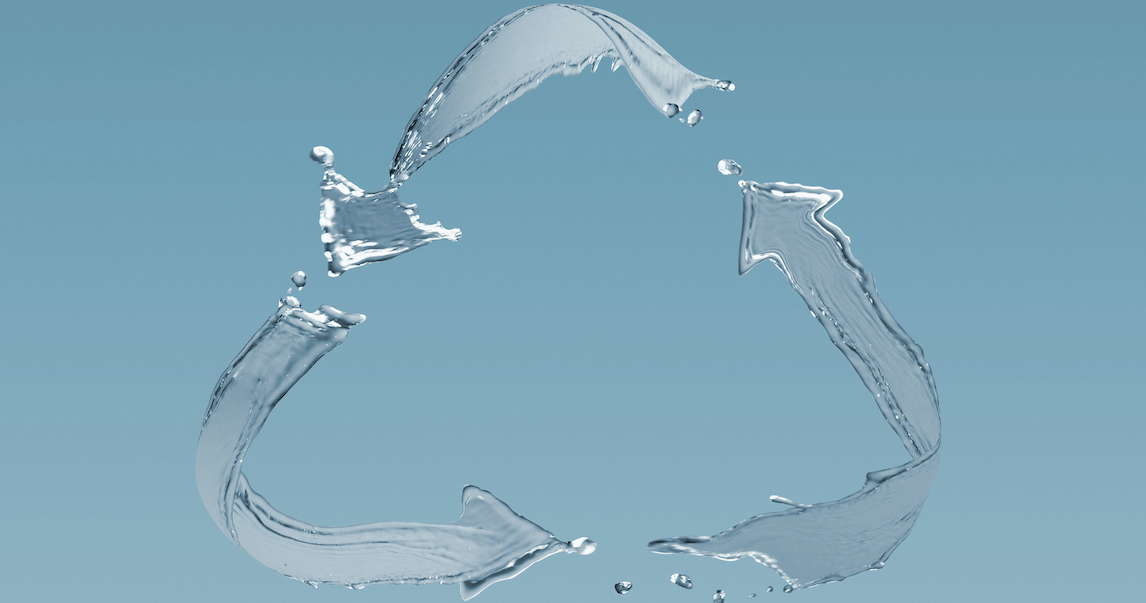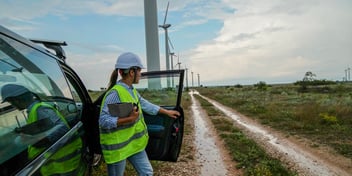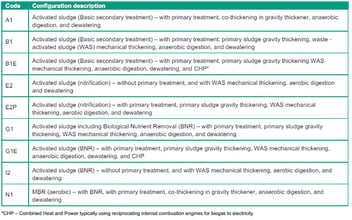Utilities on pathway to carbon neutrality

With water and wastewater treatment processes one of the biggest public sector contributors to carbon emissions, utilities around Australia are turning their attention to more sustainable technologies and practices in pursuit of net zero emissions – but there are still barriers that need attention.
Delivering some of the largest water and wastewater projects across Australia, WSP have undertaken research into identifying the challenges and opportunities for the water sector in terms of working towards this goal.
The report – ‘A Pathway to Carbon Neutrality in the Australian Water Industry’ – was developed by WSP Senior Water Treatment Engineers Tanu Kaur and Matt Lyon, backed by research into relevant policies, and discussions with water utilities and associations across Australia into identifying carbon reduction trends, technologies, and existing tools and frameworks available to assist in decision making.
One of the key findings from the research is that a lack of state-legislated targets is limiting the ability of some water utilities to implement significant carbon emissions reductions, Lyon said.
“The research has been all about understanding how the water industry could achieve net zero emissions. We were interested in identifying the hurdles the industry is facing, and how utilities could best integrate emissions reductions into their day to day decision making,” he said.
“To better understand the policy setting, we completed a review of emissions reduction legislation, which was quite eye opening. Every state government has a net zero policy of some description.
“But what we found when talking to utilities across the country was that where a state government had an aspirational policy, as opposed to a legislated emissions reduction target, only cost-positive emission reduction initiatives have been obtaining approval from their state pricing regulator.
“This has meant that these water utilities haven’t been able to make large-scale investments to significantly reduce emissions without legislated targets.
“Because of this we’re now seeing some of these utilities investigating their customers' willingness to pay as a way to demonstrate to pricing regulators that their emission reduction projects are suitable for approval, although we’re yet to see if this will be successful.”
Despite this significant barrier, Lyon said some state governments already have legislated targets, which is creating significant momentum towards reducing carbon emissions within the sector.
“Victoria, for instance, has really targeted net zero policies. The metropolitan water utilities in Victoria are aiming to be net zero by 2030, with all water utilities in Victoria having a significant legislated emissions reduction as a 2025 interim target and a 2050 net zero target. The Victorian sector have already gotten into gear and are doing some really innovative things,” he said.
“For instance, multiple utilities have banded together under bulk power purchasing agreements to work towards net zero by obtaining electricity from renewable sources and significantly reducing their emissions.
“We’re also seeing utilities are now looking at quantifying emissions of different technologies on new projects as part of options assessments so that they can clearly plan their emissions reduction pathways. Initiatives like these could be rolled out across other states as they begin to establish legislated targets.
“But the sooner there is legislation at either a federal, state, or council level for council utilities, the sooner all utilities can start putting plans into action. Some of the projects utilities are working on can have equipment lifespans of 20 or 30 years, and civil infrastructure that lasts even longer. The earlier utilities can start planning and implementing pathways to net zero, the sooner we can get there as an industry in the most cost-effective manner.”
Another significant challenge in achieving net zero in the water sector is the effective mitigation of fugitive emissions, with measurement of this emission profile still under contention, Lyon said.
“Scope two emissions – carbon emissions from electricity – aren't going to be an insurmountable challenge for the water industry. There are proven avenues for reducing these emissions, with cost-effective solutions having been implemented in the water industry for decades, including onsite power generation from solar, micro hydro, and biogas,” he said.
“While some state governments don’t have net zero emissions policies, some have renewable energy targets, which if achieved will reduce emissions in the grid and be another pathway for the sector to reduce scope two emissions. We’ve seen this already in the ACT for instance, with the territory government having purchased 100% renewable energy supply, and in Tasmania, which produces 100% renewable energy.
“Scope one emissions, primarily being fugitive emissions from sewerage networks treatment processes, are the big challenge. Further research is needed to be able to address these emissions and is an ongoing focus for the industry.”
Lyon said that, as part of Australian greenhouse gas accounting for reporting emissions to the UN, the Australian Government has tools available to calculate emissions from domestic sewage.
“The NGERS calculators for wastewater emissions are publicly available and are being used by utilities that meet the emissions reporting threshold. The emissions factors in the calculators have changed recently, and there is still some debate in the industry as to whether we are accurately measuring scope one emissions from domestic sewage,” he said.
“Encouragingly, there are utilities partnering with universities to continue research into quantifying these emissions, such as nitrous oxide, so the industry can be more informed in its future decision making.
“The water sector is not a simple sector to completely decarbonise, particularly from scope one emissions with current technologies, which is why utilities are undertaking targeted research and development of new technologies, as well as looking at carbon drawdown initiatives as part of their pathways to reduce their overall emissions and achieve net zero.”
WSP Sustainability Associate James Logie said fugitive emissions pose a significant challenge to water utilities on the pathway toward net zero as the emissions are difficult to monitor and eliminate.
“Mitigating fugitive emissions is going to take some big technological advances, and significant changes to a lot of current processes,” he said.
“But the water sector has a unique opportunity that other sectors don’t have, and that’s in energy recovery from waste. There is a lot of calorific energy in the sewage stream that can be processed to create renewable energy.”
Lower South Creek
Sydney Water’s Lower South Creek Treatment Program includes several innovative process technologies which will deliver significant energy and carbon savings; these types of technologies can help pave the way to a net zero water services industry.
“The water and wastewater sector presents an incredible opportunity to achieve a more circular economy, with the Lower South Creek Treatment Program a great example of what can be achieved,” said Sydney Water’s General Manager for Asset Lifecycle, Paul Plowman.
“Once complete, the program is forecast to result in a 70% self-supply of electricity for Quakers Hill and St Marys treatment plants.”
The program adopted a range of wastewater process innovations to reduce energy and carbon emissions. This includes the transfer of sludge from Quakers Hill Water Recycling Plant (WRP) to a regional biosolids hub at St Marys WRP – a first for Australia – with centralised biosolids processing providing a more cost-effective anaerobic digestion process, with energy recovery through a cogeneration plant.
St Marys WRP is the second in Australia to utilise the Thermal Hydrolysis Process (THP) for sludge pre-treatment, improving biogas generation during digestion, reducing the volume of biosolids through improved de-watering.
Mechanical Primary Sedimentation (MPS) screens have been used to reduce aeration and energy requirements in the bioreactor, another first in Australia for the water sector.
Quakers Hill will utilise the Nerada Aerobic Granular Sludge (AGS) process, where treated effluent is decanted after a very short settling period, with approximately 25% to 30% less energy and carbon emissions than a conventional membrane type bioreactor. This will be the second of its kind used in Australia.
The program was Sydney Water’s first to pursue an infrastructure sustainability rating from the Infrastructure Sustainability Council of Australia, this was led by WSP with the aim of benchmarking sustainability performance for large projects and utilising outcomes to inform future planning.
“When scope two emissions are solved through a transition to renewables in the grid, and if we can reduce scope one emissions, net zero carbon is within reach,” said WSP Sustainability Associate James Logie.
“The thermal hydrolysis process used at St Marys stabilises the pathogens in the biosolids waste, meaning that they can be used for beneficial use within the Sydney basin.
“The St Marys anaerobic digestion plant was designed to allow for future co-digestion, a significant opportunity to increase biogas production and electricity self-supply.”
Measuring performance
In order to measure the program’s sustainability performance, it was benchmarked against the Water Services Association of Australia’s Wastewater Treatment Plant energy data from 245 wastewater treatment plants across Australia and New Zealand.
“Benchmarking performance between treatment plants is a great way to measure what success looks like. And this project can in turn set a new high-performance benchmark,” Logie said.
According to Paul Plowman, Sydney Water expects the Quakers Hill and St Marys plants to be two to three times more energy efficient than current plant performance.
“With energy recovery, in terms of net electricity needs, the carbon emission savings will be even better through self-supply of electricity avoiding emission intensive grid electricity,” he said.
“Now that the plants are in commissioning and are about to enter into operation, actual performance data will become available and become a useful benchmark for future projects.”



